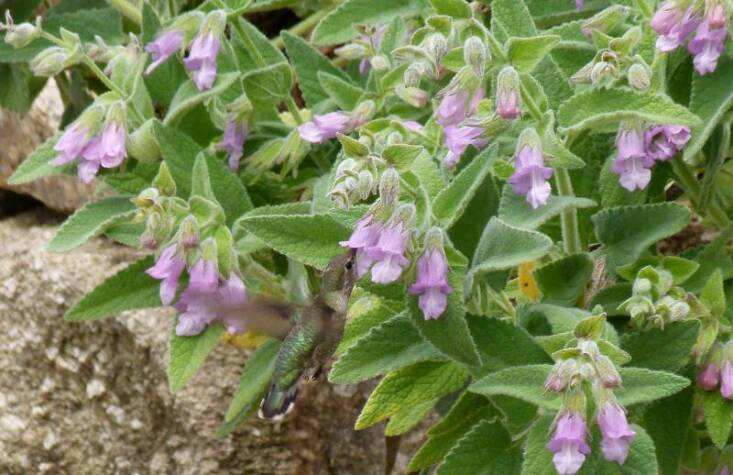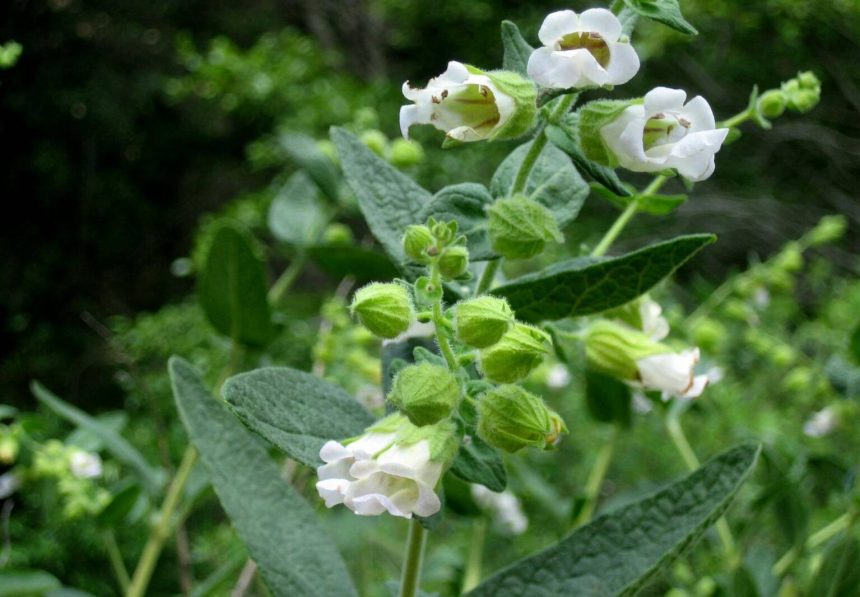Pitcher Sage, Lepechinia
When I first learned about these plants, I thought they were simply unfamiliar salvias, and as a true salvia fan I felt a wee bit remiss. Turns out, salvias and lepechinias are related, and lepechinias are actually known as “false sage.” I also found out that pitcher sage is in the mint family, Lamiaceae, but they aren’t scary spreaders that you’ll later regret adding to your garden; rather, they share the family’s pleasantly aromatic trait. After repeatedly adding pitcher sages to my clients’ gardens with great success, I am now pro- pitcher sage. Please keep reading to learn why:
Lepechinias were named for the 18th century Russian naturalist, physician, and explorer, Ivan Ivanovich Lepechin, and consist of approximately 43 species that range from Northern California to Central Argentina. What makes these plants distinctive are their charming pitcher-shaped flowers and their uniquely fragrant leaves, so intriguing that you want to sniff them over and over in an attempt to decipher what it reminds you of. Lemon-fresh cleaning products or maybe zippy citrus soda? In fact, North and South American indigenous groups commonly use Lepechinia for antiseptic and medicinal purposes, which makes sense because the chemical compounds that give these plants their scent are possibly responsible for their cleansing and medicinal properties.
In general, pitcher sages are fast-growing, which is always useful in the garden. Some say, though, that pitcher sage can be short-lived, but of course this depends on your climate and growing conditions. Even so, these plants attract so many pollinators that they are worth adding.
A Few Favorites

Lepechinia fragrans (fragrant pitcher sage): An evergreen shrub growing to 3 to 5 feet tall and as wide, with attractive and, of course, fragrant leaves. Their stems and leaves are covered with tiny hairs that give the plant a fuzzy look. In spring, showy foxglove-like lavender-hued flowers appear; as they age, the petals drop off and the calyx darkens and gets bigger which extends the floral display. I enjoy this plant because it is native to California, like me, and is useful in USDA zones 9-11. I recommend pruning back new growth for a more compact plant.
Lepechinia hastata (Baja pitcher sage): An evergreen to semi-evergreen shrub that grows to a moderate 4 to 6 feet tall and spreads slowly by underground rhizomes to at least as wide (and won’t take over your garden). I admire the large, soft arrow-shaped leaves and magenta flowers that appear on 1-foot-long spikes in the summer and early fall. I added this plant to the native garden at the Mill Valley Public Library’s Smart Garden and it was still blooming in January, so I suppose its blooming schedule is not firm.








